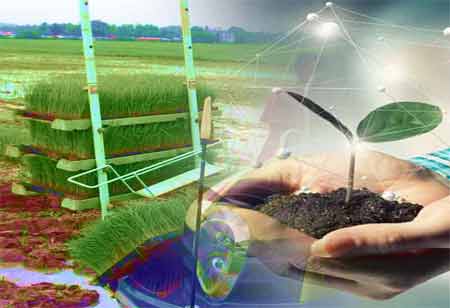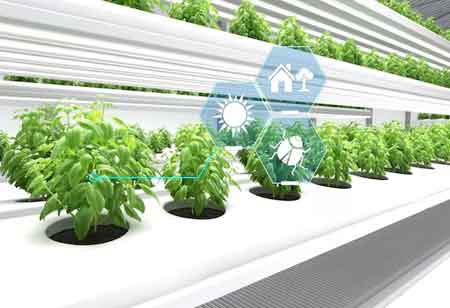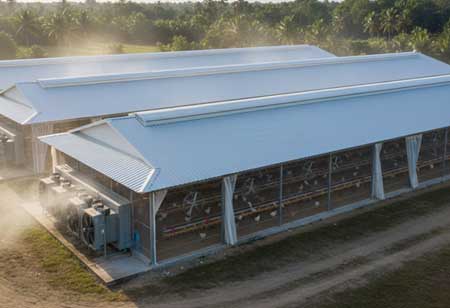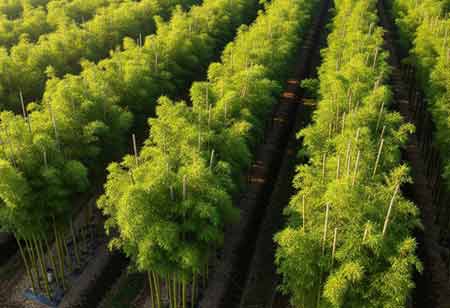Thank you for Subscribing to Agri Business Review Weekly Brief
Building Climate-Resilient Livestock Farming Practices
Climate change has transitioned from a distant concern to an undeniable reality affecting various aspects of human existence, including agriculture

By
Agri Business Review | Wednesday, February 28, 2024
Stay ahead of the industry with exclusive feature stories on the top companies, expert insights and the latest news delivered straight to your inbox. Subscribe today.
Climate change threatens livestock farming, requiring a comprehensive approach, including shelter design, water management, and climate resistance breeding. Collaborative efforts among farmers, researchers, and policymakers are crucial.
FREMONT, CA: Climate change has transitioned from a distant concern to an undeniable reality affecting various aspects of human existence, including agriculture. Within this sector, livestock farming, pivotal for sustenance and economic stability for millions, confronts many obstacles due to the changing climate. Factors such as unpredictable weather patterns, escalating temperatures, water scarcity, and the heightened occurrence of extreme weather phenomena jeopardize animal well-being, productivity, and the overall viability of farms. Nonetheless, amid these adversities, opportunities arise by adopting climate-resilient livestock farming methodologies.
The Impact of Climate Change on Livestock
Elevated temperatures pose a significant risk of heat stress in animals, adversely affecting their overall well-being, reproductive capabilities, and milk production. The confluence of droughts and altered precipitation patterns intensifies the challenge of water scarcity, impacting the availability of essential drinking water and the irrigation resources necessary for fodder production. Concurrently, extreme weather events such as floods, droughts, and wildfires pose formidable threats by disrupting grazing lands, causing infrastructure damage, and displacing livestock. Moreover, the evolving climate conditions contribute to the emergence and spread of diseases in animals, further compounding the complexities of managing and safeguarding animal health. Consequently, a comprehensive approach is imperative to mitigate these climate-induced challenges and ensure the resilience of animal agriculture systems.
Shelter Design
Effective cooling strategies are imperative for maintaining optimal animal welfare in hot weather conditions. Utilizing well-ventilated sheds with proper insulation, shade curtains, and misting systems proves instrumental in regulating animal body temperature. Additionally, flood-proofing measures, such as elevating shelters on platforms or employing flood-resistant materials, play a crucial role in safeguarding animals and infrastructure from potential flooding incidents. These proactive approaches enhance the animals' overall well-being and contribute to the agricultural operation's resilience and sustainability.
Water Management
Implementing rainwater harvesting is integral to securing a reliable water supply throughout the year by capturing and storing precipitation during increased rainfall. Additionally, adopting water-efficient irrigation practices, such as drip irrigation and other conservation techniques, in fodder production minimizes water consumption and diminishes dependence on limited water resources. These strategic approaches contribute to sustainable water management, fostering environmental resilience and mitigating the impact of water scarcity.
Breeding for Climate Resistance
Optimal breed selection is critical for bolstering herd resilience in livestock management. Opting for indigenous breeds inherently adapted to local climatic nuances, such as heightened heat tolerance and drought resistance, serves as a strategic approach. This careful selection aligns to fortify the herd against environmental challenges. Additionally, the implementation of selective breeding programs further contributes to the development of resilient livestock populations. Emphasizing traits like heat tolerance, water efficiency, and disease resistance, these programs aim to cultivate successive generations better equipped to flourish in diverse and potentially adverse conditions. This proactive breeding strategy enhances the herd's overall adaptability and positions it for sustained productivity and longevity.
Additional Strategies
One fundamental approach involves refining feeding practices by offering balanced diets comprising high-quality forage and essential nutrients, bolstering animal health and fortifying resilience to stress. Another impactful measure is the incorporation of agroforestry into farming systems, which provides shade, enhances soil quality, and offers supplementary fodder sources. Furthermore, adopting early warning systems, facilitated by weather forecasting tools and insurance schemes, empowers farmers to proactively prepare for and mitigate the consequences of extreme weather events. These comprehensive strategies contribute to fostering a more resilient and sustainable agricultural landscape.
Implementing climate-resilient practices necessitates collaborative efforts among farmers, researchers, policymakers, and extension services. Key measures include investment in research and development of innovative technologies, facilitation of knowledge dissemination among farmers, and provision of financial incentives to encourage the adoption of sustainable practices.
By embracing these adaptive strategies, stakeholders aim to safeguard farmers' livelihoods, enhance the long-term sustainability of livestock production, and ensure the welfare of animals amidst climate variability. Together, these concerted efforts aim to foster a future where farms and animals endure and flourish amidst climate challenges.





